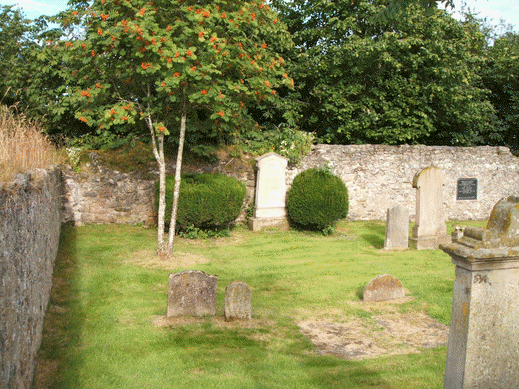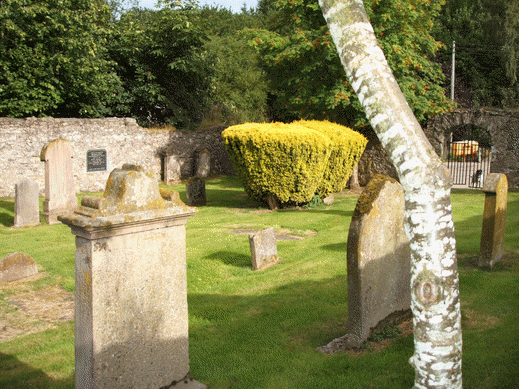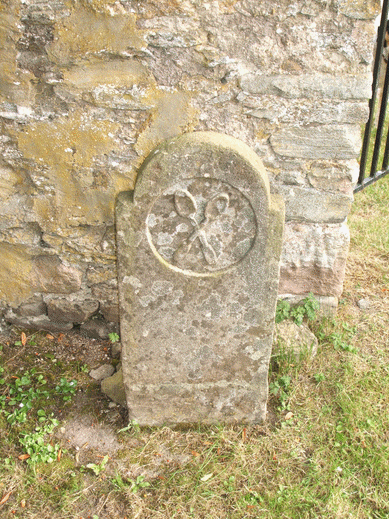Inverness Deanery
Farnua
Parish Church: OS Ref: NGR NH 606452 H.E.S. No: NH64NW 8 Dedication: B.V.M. / St Curetán
Associated Chapels: Hermitage at Bunchrew {NGR NH 61_45_}.
Farnua is also known as Farnaway and Fearnaie which, for some, has led to confusion because of the similarity with the names of Darnaway, to the east, and Fearn, to the north-east in the diocese of Ross.
According to the Wardlaw MS, this church was dedicated to St Corridon (St Curetán), an 'abb' of the Early Church community at Rosemarkie, who was in episcopal orders (fl.690-710).1
The parish of Farnua was originally formed out of the parish of Dulbatelauch (Dunballoch, which was later moved to Wardlaw), some time before 1220.2 According to Batten, three dabhaichean of Dunballoch were excised in order to create thew new parish. John Byset had recently given up the patronage of Dunballoch to the bishop of Moray, and so, as the new patron as well as the ordinary, the bishop was able to effect the creation of the new parish of Farnua with ease. Very soon afterwards3, the bishop (Andrew de Moravia) granted the church to the common fund of the canons of his cathedral in Elgin. This gift comprised the whole church of Farnua with all its pertinents, except for one half-dabhach which pertained to the bishop's mensa. Regardless of Papal rules, bishop Andrew seems not to have placed a vicar in the new parish, chosing instead to have the cure served by a parochal chaplain.4
The ancient church of Farnua stood at Kirkton of Bunchrew (Baile-na-h'Eaglais) where there are still the remains of the church and churchyard with several stones. The graveyard used to be considerably larger than it is now, and many skeletons have been found in the field to the north of the road.
This parish was united with that of Wardlaw on 14 July, 1618, to form a single parish known as Kirkhill.


Above: Views of Farnua Churchyard.

Above: An interesting grave-marker with crossed spoons at Farnua Church.
{Click HERE for more photographs of Farnua by Mike Bradley.}
| Name | OS Grid Ref. | Extent | Comment |
|---|---|---|---|
| Inglistoun | NH 610454 | 4 ploughgates | "Englishtown" |
| Bunchrew | NH 618458 | ½ dabhach | |
| Kirktoune of Inchberye | NH 604453 | ½ dabhach | |
| Inchberrie | NH 588454 | ½ dabhach | |
| Phopache | NH 604461 | 2 ploughgates |
Hermitage at Bunchrew. Tradition has it that there was a hermitage, or cell, at Bunchrew near the shores of the Firth, where the hermits kept a register of local events, known as Scriptum Bunchrivæ.5
Parish Clergy:
1226 (5 May) - Alexander, parson (rector) of Farneway, signs as a witness, a charter of bishop Andrew de Moravia. [Moray Reg., 69] This evidence confirms that, on the date of signing this charter, Farnua had not yet been annexed to the cathedral. His signature confirms that Alexander was present in Elgin for the Synod of St Giles.
c.1315 Peter, parochial chaplain of Farnua, witnesses a charter of Celia Byset. [Beauly Charters, no. 8] By this charter, Celia Byset, widow of Sir William de Fenton, lord of Baikie and Beaufort, grants, in her widowhood, for the salvation of her soul and the soul of her ancestors and successors, to God and the Blessed Mary, and the Blessed John Baptist, and the brethren of the Valliscaulians serving and to serve God in the House of Beauly, all the third part of the land of Altyr
1. Wardlaw MS, introduction, p.xvi.
2. Moray Reg., 41. See https://saintsplaces.gla.ac.uk/place.php?id=858 for an argument for the "before 1220" date.
3. The fact that a "parson of Farneway" appears as a signatory to Bishop Andrew's charter of 5 May 1226, [Moray. Reg., 69], refines the dating for the annexation of Farnua as a 'common church' to after this date.
4. Batten, E C (1877) The Charters of the Priory of Beauly, 76-77. https://archive.org/details/chartersofpriory00chis/page/n12
5. Scott, H (1915-61) Fasti Ecclesiæ Scoticanæ, Edinburgh, vol.vi, p.472. https://archive.org/details/fastiecclesiaesc06scot/page/472
e-mail: admin@cushnieent.com
© 2019 Cushnie Enterprises
